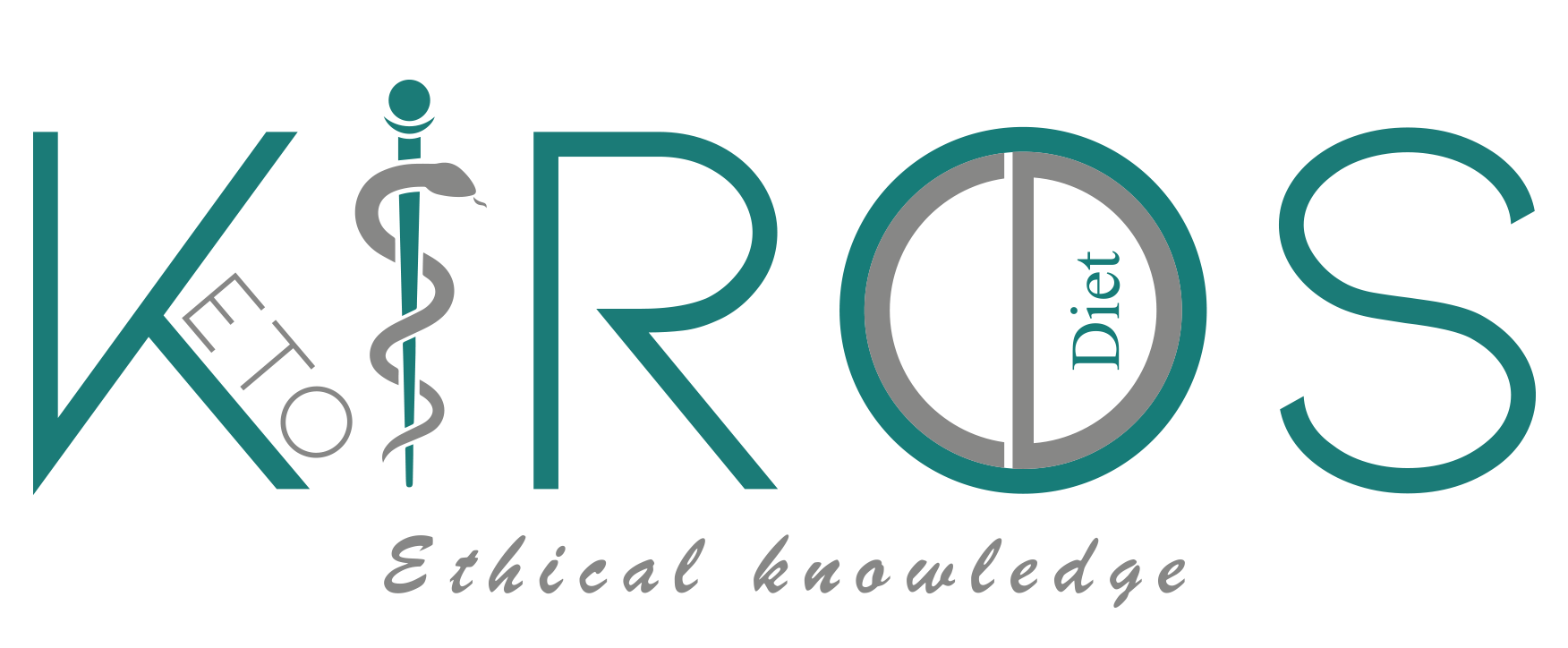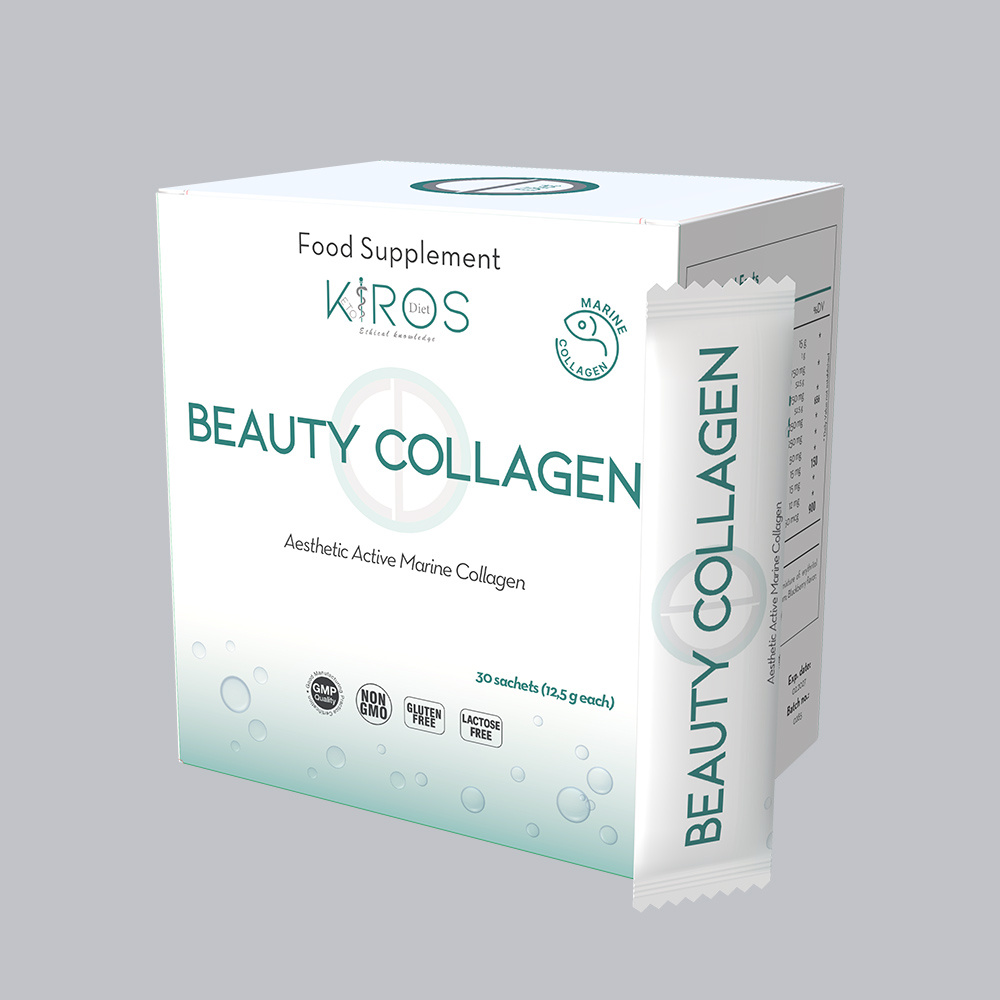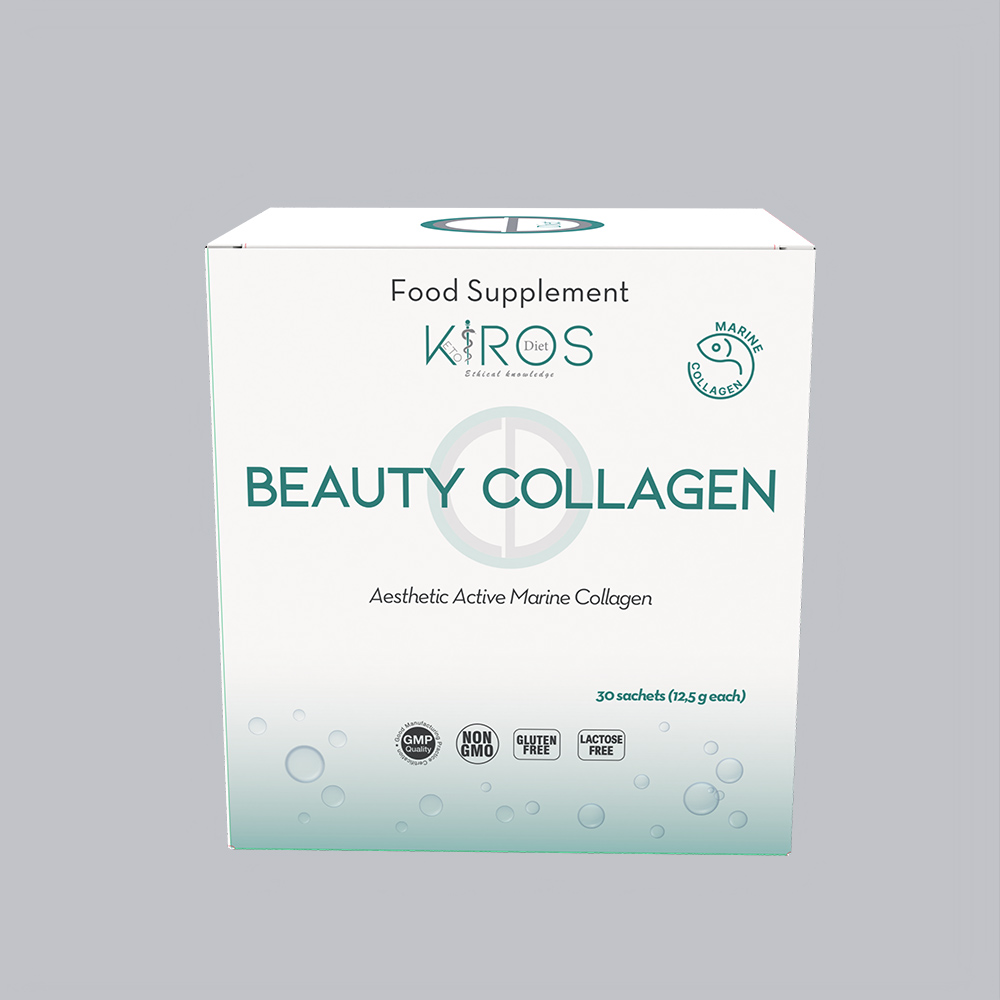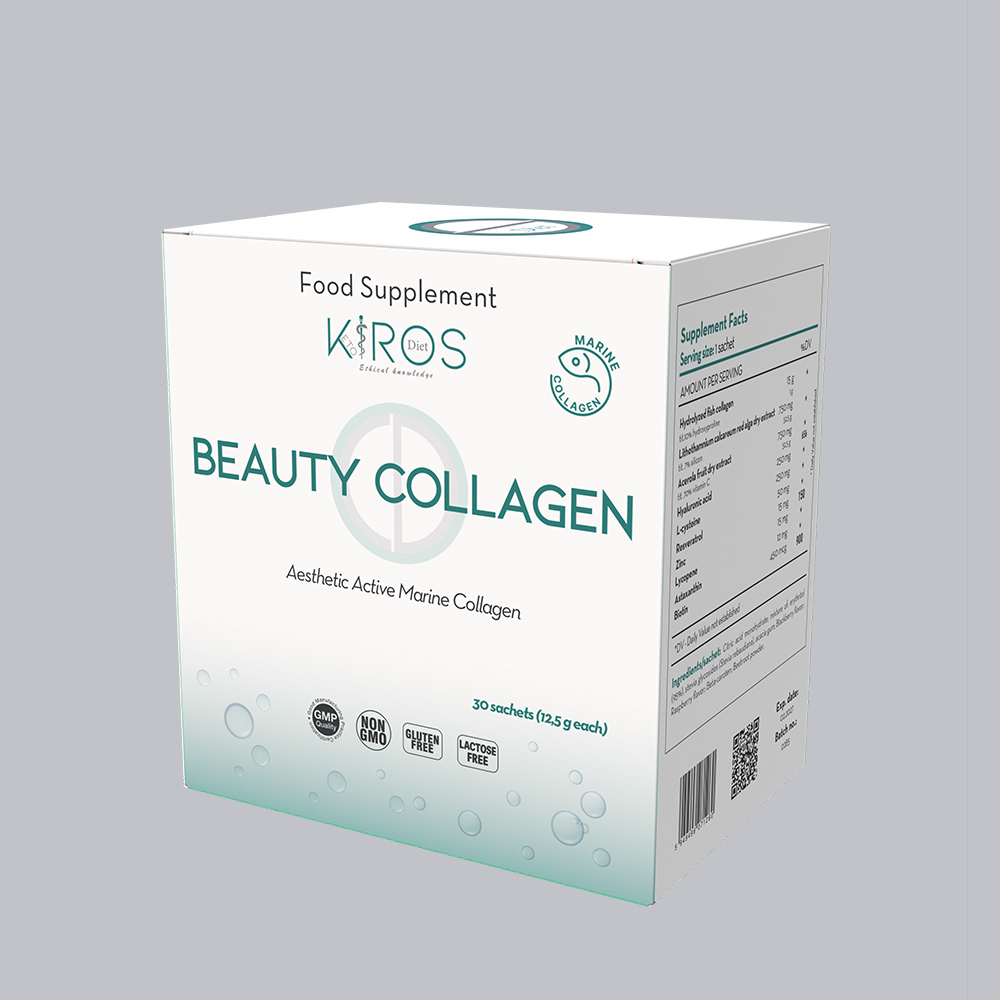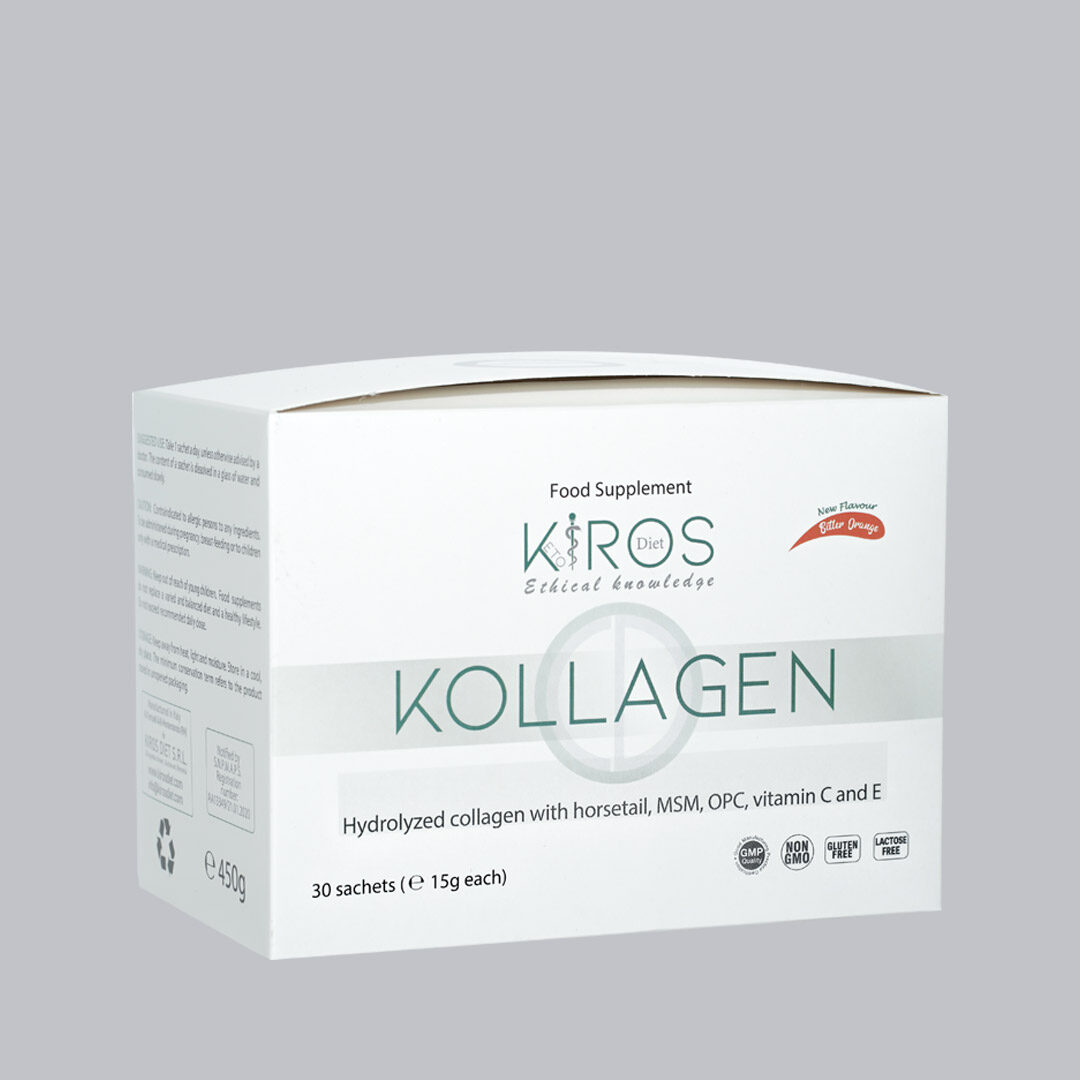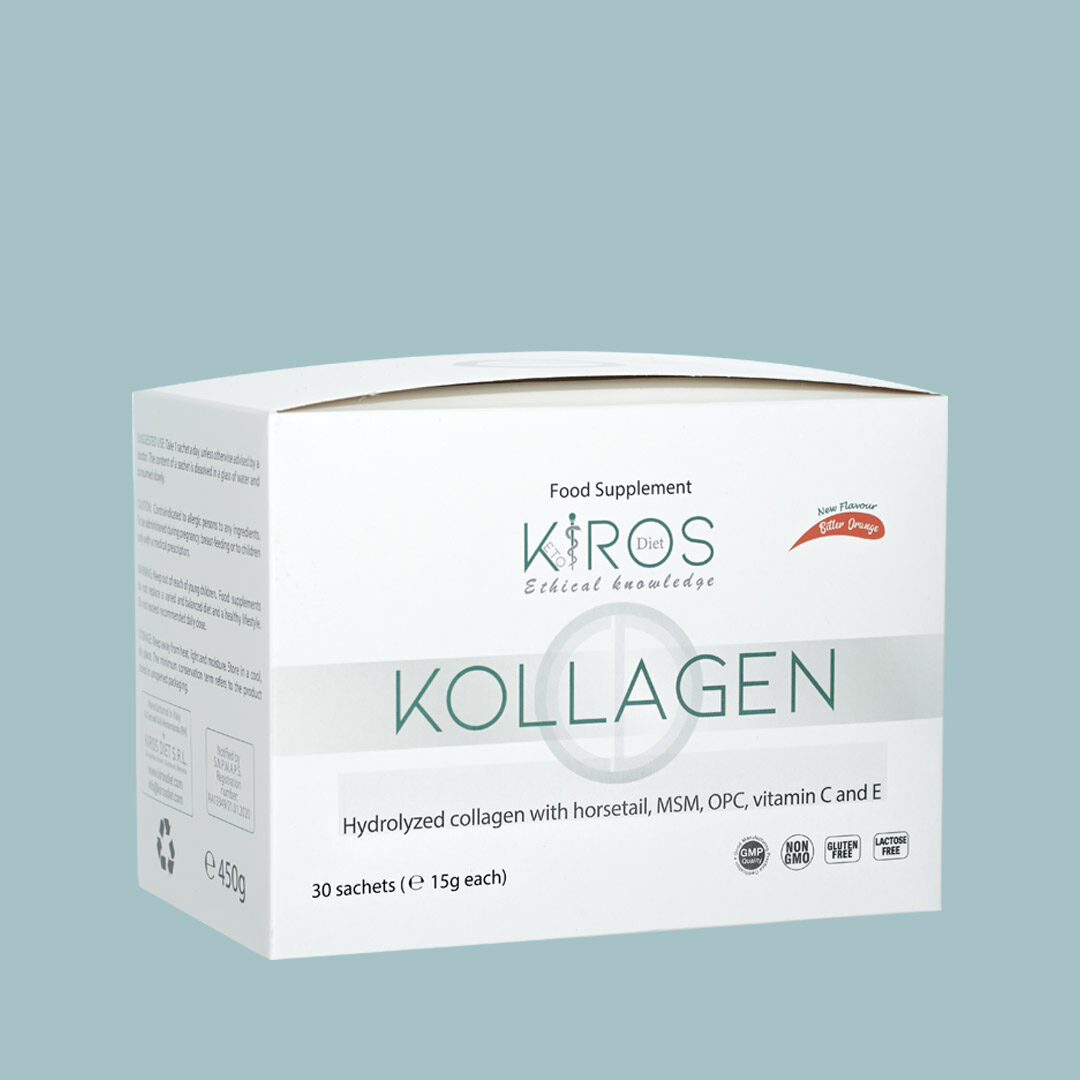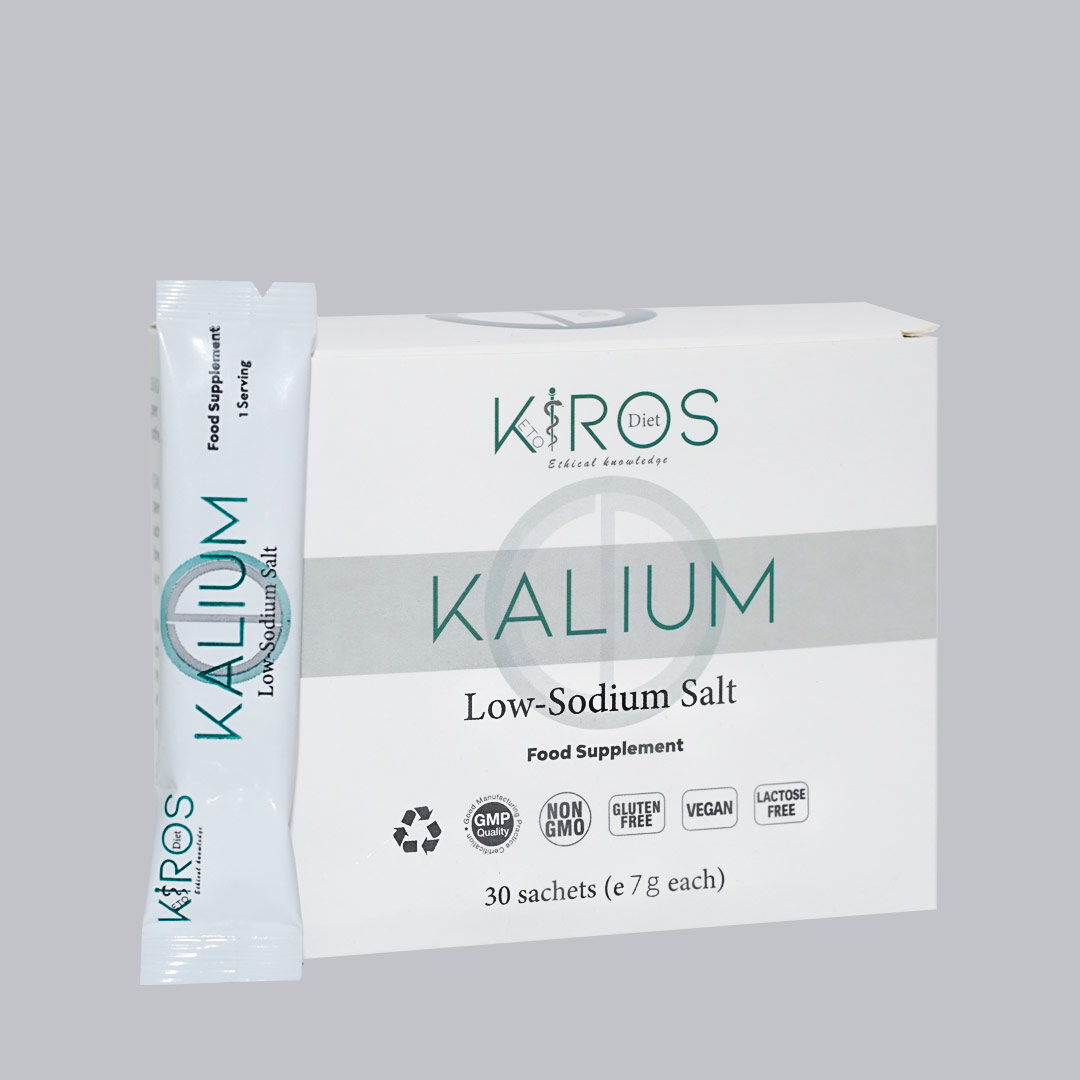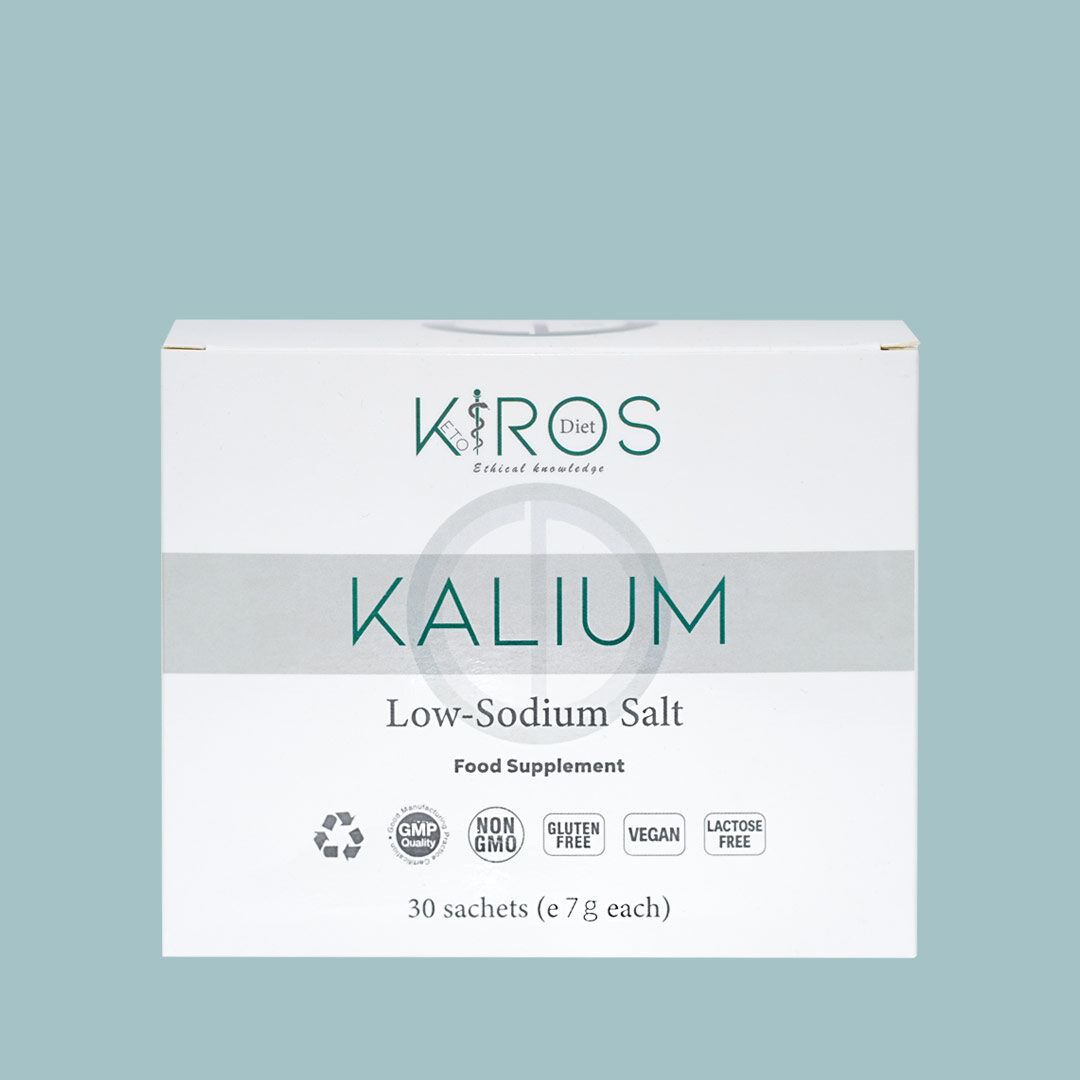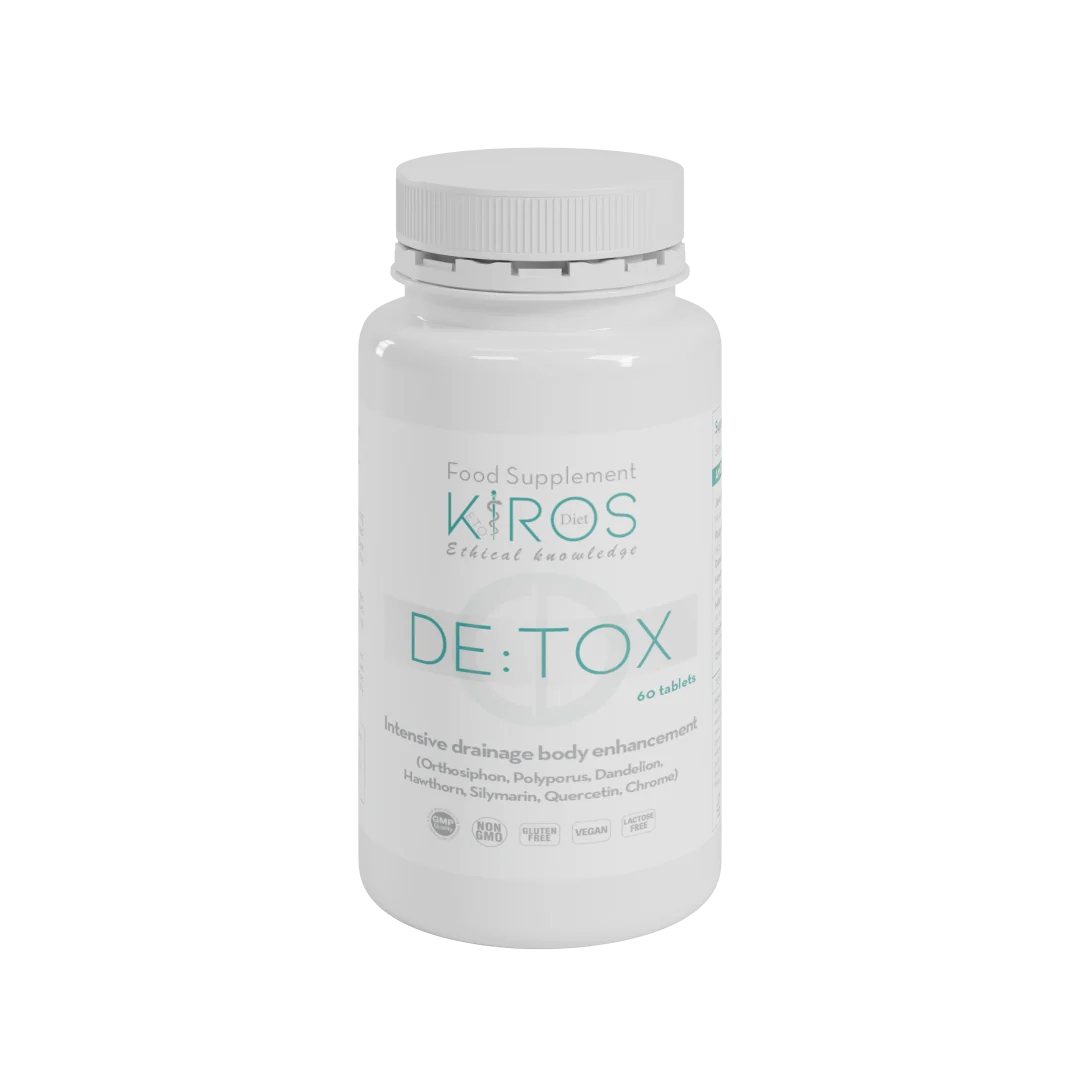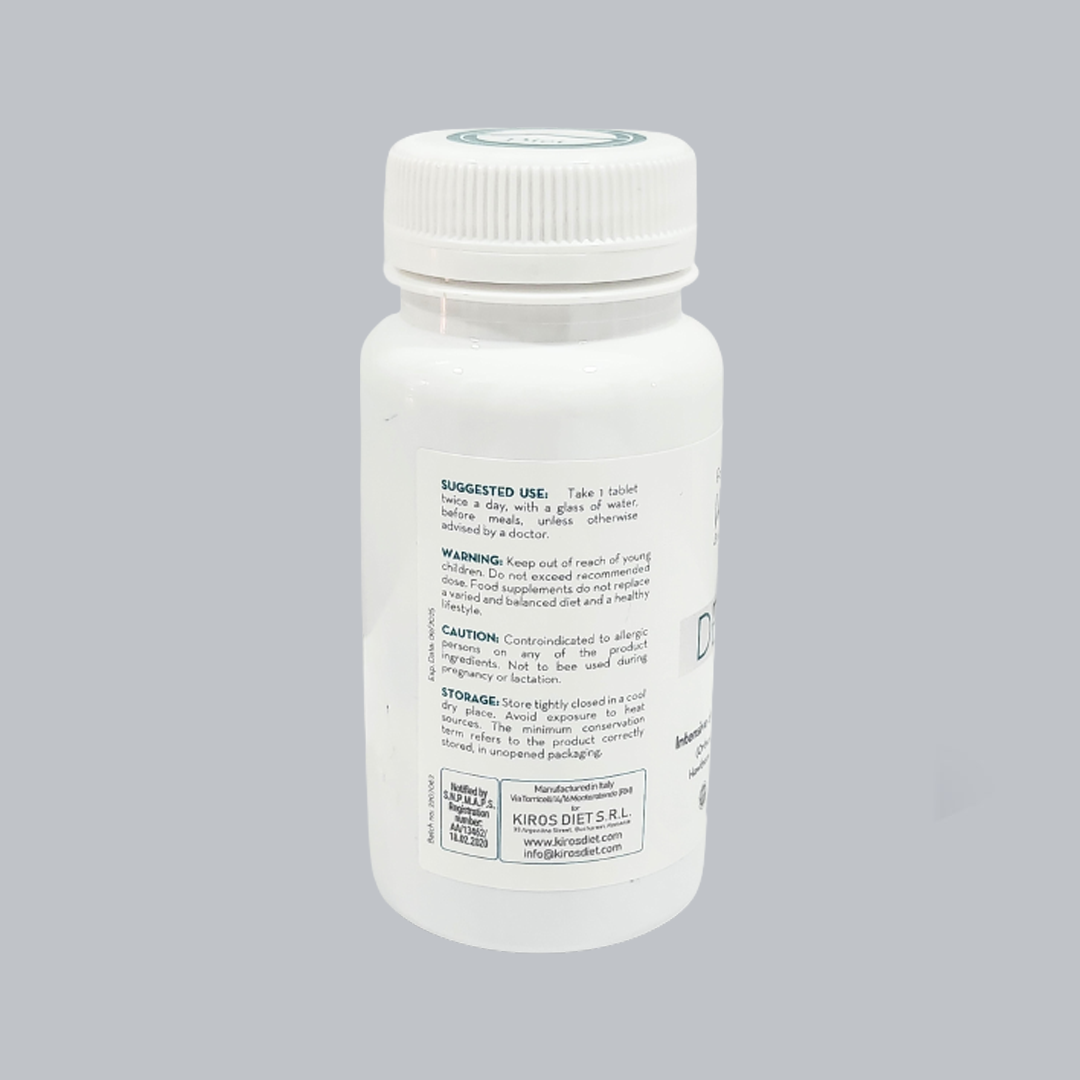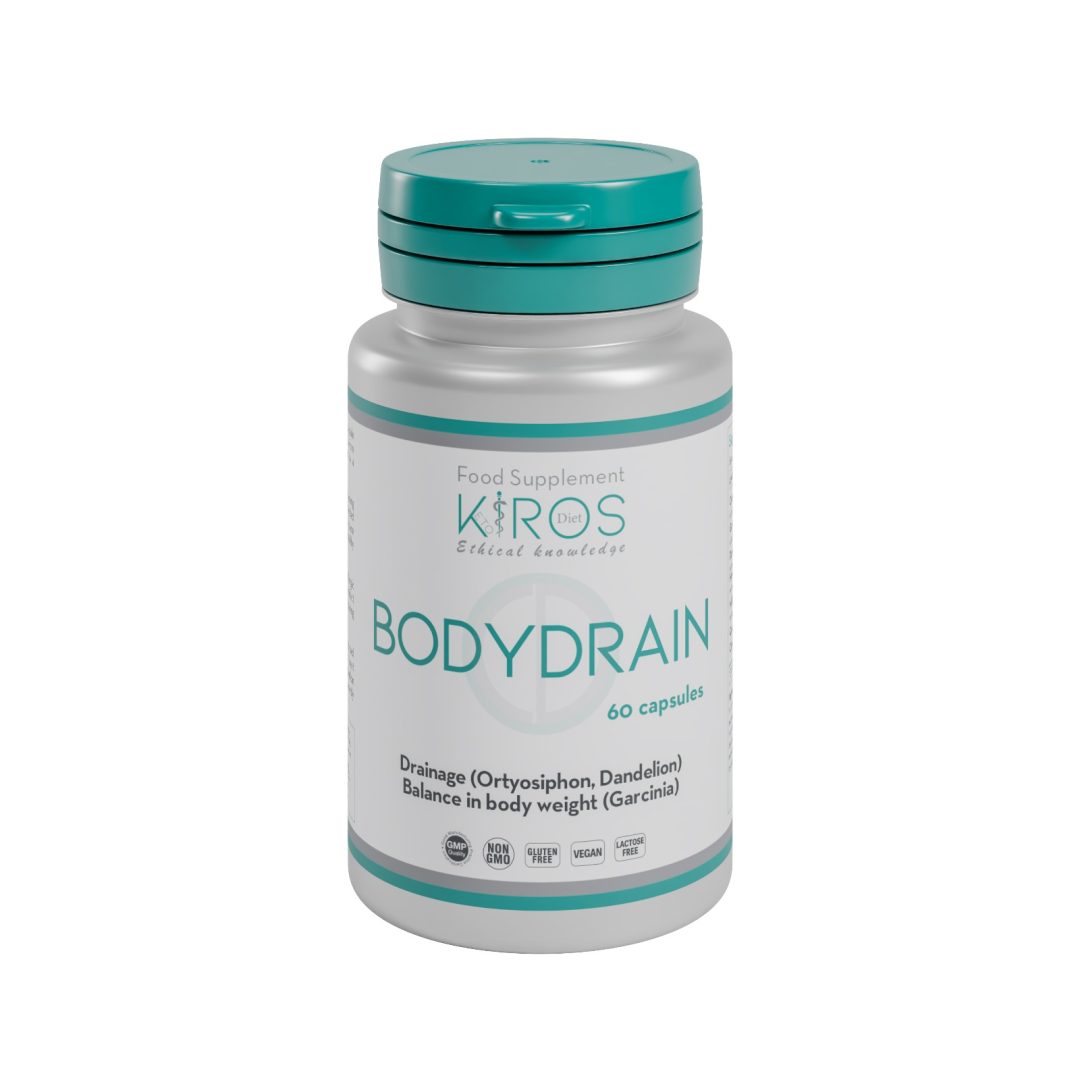Supplementation with Beauty Kollagen:
- Improves skin quality
- Reduces wrinkles
- Maintains skin elasticity and firmness
- Protects microcirculation
- Promotes the synthesis of collagen and elastin
- Inhibits collagen degradation
- Reduces skin imperfections
Effectiveness
Beauty Kollagen. It is a nutraceutical composed of hydrolyzed marine collagen 10 g (10% hydroxyproline), low molecular weight hyaluronic acid of vegetable origin, cysteine 250 mg, red algae extract Lithotamnium calcareum (7% silica), vitamin C, resveratrol, astaxanthin, biotin, zinc, lycopene. Useful in all cases of reduced dietary intake or increased need for useful components to improve the synthesis of collagen in the body and with anti-aging and restructuring properties.
Beauty Kollagen It is an all-in-one formula designed to promote collagen synthesis, with powerful anti-aging components and particularly designed to improve the health of skin, hair, nails, and to reduce wrinkles with the effect of rejuvenation.
COLLAGEN SYNTHESIS COMPLEX
(Marine Collagen and Hyaluronic Acid, Vitamin C, Silicon and Resveratrol)
Collagen is one of the most important proteins in vertebrates and represents one third of the total proteins of the human body, where it plays a fundamental role in the structure and functionality of organs and tissues, such as skin, cartilage, muscle tissue. Over time, collagen fibers become damaged: at the age of 25 years, cells begin to lose the ability to synthesize collagen, whose production decreases by an average of 1.5% per year. This process is accentuated beyond the age of 45 with a decrease of more than 35% at the age of 60 and loss of thickness and strength.
In addition to time, some other factors accelerate the loss of collagen: intense physical activity, trauma, menopause, overweight, hormonal therapies, incorrect dietary style, cancer treatments, intense and continuous exposure to sunlight, particular environmental conditions (pollutants, smoke, stress). Supplementation with collagen has also shown benefits to prevent neurodegenerative mechanisms, cardiovascular health and intestinal function. In the functional aesthetic field is an aid to weight control and to maintain healthy gums, hair and nails. In the sporting field it promotes recovery and protects joints.
Marine Collagen & Hyaluronic Acid. Thanks to the synergy of marine collagen and hyaluronic acid, Beauty Kollagen is particularly useful in promoting the process of recovery and regeneration of skin cells and connective tissue of the face and the whole body. It visibly reduces the appearance of aged skin that is deeply nourished and restores its vitality. The brightness of the skin increases, as well as the health of the nails. The product makes the skin plumper and regains its youthful appearance.
Marine collagen is a pure form of hypoallergenic protein produced by fish. The remaining fish skin from food production is thoroughly washed, then enzymatically hydrolyzed to produce the marine collagen peptides, which have a low molecular weight and easy digestion and absorption. Marine collagen differs from collagen of bovine or porcine origin in that it contains higher amounts of the amino acids glycine and proline, which have been particularly associated with promoting healthy hair, skin, and nails 1-4. . It is a powerful cellular antioxidant. Helps maintain the integrity of mesenchymal-derived substances (connective tissue, bone tissue, and dentin). Essential for the formation of collagen and for the formation of hydroxyproline from proline through the hydroxylation reaction biochemical process essential for the maintenance of connective tissue.
Vitamin C (ascorbic acid) is a cofactor of several enzymes, most notably proline hydroxylase, necessary for collagen synthesis. It cannot be produced by the body and must be obtained from the diet. It is essential for collagen formation and helps maintain the integrity of mesenchymal- derived substances (connective tissue, bone tissue, and dentin). In the absence of vitamin C, cells cannot hydroxylate proline to hydroxyproline resulting in collagen instability. Proline hydroxylation is in fact an essential biochemical process for the maintenance of connective tissue. Beauty Kollagen contains natural vitamin C extracted from Malpighia glabra, a plant that grows in Central and South America. The fruit called acerola is rich in natural vitamin C that is better assimilated by the body. The fruits of acerola promote the body’s natural defenses, have a restorative and antioxidant action.
Lithothamnium calcareum. Silicon is a structural element of connective tissue and is involved in the constitution of the main macromolecules such as elastin, collagen, proteoglycans and glycoproteins, promoting their regeneration. The silicon content is closely related to the optimal conditions of the skin, such as the rate of hydration, elasticity, absence of wrinkles and expression lines, skin and dermis regeneration capacity. It also acts as a metabolic protector, with different mechanisms: it opposes lipid peroxidation responsible for the release of free radicals, contrasts the glycosylation of connective tissue proteins that causes stiffness and sclerosis, regulates and stimulates fibroblast mitosis and for this property, plays an essential role in the regeneration process of skin and epidermal cells, and finally it is a cofactor of elastin synthesis. Silicon has a fundamental role in the synthesis of collagen by influencing the process of hydroxylation of proline into hydroxyproline. The silicon in Beauty Kollagen comes from Lithothamnium calcareum a red alga consisting of a robust thallus that is formed by calcareous deposits in the cell wall. These deposits are formed by minerals in highly bioavailable organic form such as silicon, calcium, magnesium.
Resveratrol. Collagen is degraded by metalloproteinases (MMPs), proteolytic enzymes that break down the long protein chains that make up collagen, forming shorter fragments without mechanical properties. The MMPs are a family of molecules similar in chemical structure, with different specificities for a wide variety of substrates, able to degrade all components of the extracellular matrix (collagen, elastin, proteoglycans). The MMPs most involved in the processes of skin aging are the MMP1, which initiate the degradation of collagen type I and III; the MMP9, which operate a further fragmentation into smaller peptides; while the MMP2 attack the collagen type IV, contributing to the formation of wrinkles. In young skins not exposed to sunlight, the synthesis of collagen by fibroblasts and its degradation by MMPs are in constant balance, so as to ensure the physiological replacement of structural macromolecules, maintaining their content and functionality and preserving the integrity of the skin. With increasing age there is a progressive variation of this balance with a gradual reduction in the synthesis of collagen precursor peptides, associated with an increase in the degradation of mature collagen. The consequence of this degenerative phenomenon is a general disorganization of collagen fibers, which partially lose their supporting role, causing a partial atrophy of the extracellular matrix, which becomes lax and lacking in tone.
ANTI-AGING COMPONENTS to improve the condition of the skin
(Astaxanthin, Lycopene, Vitamin C, Resveratrol)
Beauty Kollagen contains natural carotenoids that accumulate in the corneocytes and in the sebum, protecting the skin and performing a photoprotective action.
Astaxanthin is a natural red-orange pigment, belonging to the large family of carotenoids and produced naturally by some microorganisms, such as the microalgae Haematococcus pluvialis, Chlorella zofingiensis and Chlorococcum. It is a powerful antioxidant, it fights oxidative damage through several mechanisms: neutralization of singlet oxygen, elimination of free radicals, preservation of cell membranes, enhancement of the immune system function. Liposoluble, it accumulates in the skin after oral administration and defends it from aging. In several studies it has been shown that oral supplementation of astaxanthin reduces wrinkles 9-10 , improves skin parameters and conditions of women and men 11 , prevents the effects of UV-A radiation and the decrease of collagen by inhibiting metalloproteinases MMP-1 and elastase.
Lycopene. Lycopene is an antioxidant carotenoid actively studied for its photoprotective action against UV-induced damage in human skin. Lycopene is abundantly present in tomatoes and its consumption is associated with reduced risk of chronic cardiovascular disease, benign prostatic hypertrophy and cancer (particularly of the prostate). One of the actively studied beneficial effects of lycopene is its photoprotective action against UV-induced damage to human skin. The concentration of lycopene in the skin correlates with its level in plasma. The accumulation of this carotenoid in corneocytes and sebum during its supplementation is well documented.
HAIR AND NAIL HEALTH
(Biotin, Zinc L-Cysteine)
Beauty Kollagen contains a selected combination of vitamins, minerals, amino acids to stimulate hair growth, restore hair structure, strengthen nails and maintain skin health, in synergy with the other components.
Zinc aids in cell regeneration. It is an essential trace element required by about 300 enzymes, contributing to growth, development, wound healing, immune function, and collagen synthesis. Poor dietary intake of meat and fish can cause deficiencies. Alopecia is often related to zinc deficiency 25 . Zinc strengthens hair, favoring keratinous synthesis, performs regenerating activities of tissues, is also useful in case of acne, helps antioxidant activity at cellular level, slows down macular degeneration that physiologically affects our sight with age.
Biotin is a coenzyme that belongs to the group of B vitamins (Vitamin B7 or Vitamin H). It is an element involved in the process of metabolism and formation of fatty acids; once taken, in fact, it is first absorbed by the ileum and then transported to the liver and finally to other tissues. It can be found in foods such as: cauliflower, carrots, spinach, mushrooms, cheese, eggs, beans, fish, white meat and red meat. It is important for the health of the scalp, but also for that of the skin. In fact, this substance regulates the production of sebum and is useful in case of seborrheic dermatitis or oily hair. A recent study demonstrated a 25% increase in nail plate thickness in patients with brittle nails following biotin supplementation.
L-cysteine is a conditionally essential sulfur amino acid that is a building block of protein. Cysteine is a key component of the protein keratin because of its ability to form disulfide bridges that give strength and stiffness to the protein. Cysteine helps build the keratin structure of hair and nails. Keratin is a fibrous protein that makes up the structure of skin, nails and hair. The cortex of hair contains keratin molecules grouped together in a fibrous structure that contains about 75% L-cysteine 29 . Deficiencies in L-cysteine alter keratin structures, causing hair to weaken and be prone to breakage. Hair consists of three layers, the cuticle, cortex and medulla. L-Cysteine is a sulfur compound precursor in keratinization, an important process in the formation of hair, skin and nails. L-Cysteine is a constituent of L-glutathione, a cofactor of
glutathione peroxidase, an antioxidant enzyme that counteracts oxidative stress in the body.
LITERATURE CITED
- De Luca C, Mikhal’chik EV, Suprun MV, Papacharalambous M, Truhanov AI, Korkina LG. Skin Antiageing and Systemic Redox Effects of Supplementation with Marine Collagen Peptides and Plant-Derived Antioxidants: A Single-Blind Case-Control Clinical Study. Oxid Med Cell Longev. 2016;2016:4389410. Oral supplementation with specific bioactive collagen peptides improves nail growth and reduces symptoms of brittle nails. Hexsel D, Zague V, Schunck M, Siega C, Camozzato FO, Oesser S. J Cosmet Dermatol. 2017 Aug 8. doi: 10.1111/jocd.12393.
- Schunck M, Zague V, Oesser S, Proksch E. Dietary Supplementation with Specific Collagen Peptides Has a Body Mass Index-Dependent Beneficial Effect on Cellulite Morphology. J Med Food. 2015 Dec;18(12):1340-8.
- Zdzieblik D, Oesser S, Baumstark MW, Gollhofer A, König D. Collagen peptide supplementation in combination with resistance training improves body composition and increases muscle strength in elderly sarcopenic men: a randomised controlled trial. Br J Nutr. 2015 Oct 28;114(8):1237-45.
- Belwal, T., Devkota, H. P., Hassan, H. A., Ahluwalia, S., Ramadan, M. F., Mocan, A., & Atanasov, A. G. (2018). Phytopharmacology of Acerola (Malpighia spp.) and its potential as functional food.Trends in Food Science & Technology, 74, 99-106.
- Li, C., Wu, W., Jiao, G., Chen, Y., & Liu, H. (2018). Resveratrol attenuates inflammation and reduces matrix-metalloprotease expression by inducing autophagy via suppressing the Wnt/β-catenin signaling pathway in IL-1β-induced osteoarthritis chondrocytes.RSC advances, 8(36), 20202-20210.
- Baralic, M. Andjelkovic, B. Djordjevic, N. Dikic, N. Radivojevic, V. Suzin- Zivkovic, S. Radojevic-Skodric, S. Pejic, Effect of astaxanthin supplementation on salivary IgA, oxidative stress, and inflammation in young soccer players, Evid. Complement. Altern. Med. 2015 (2015) 1–9
- Hu, D. Nagarajan, Q. Zhang, J.-S. Chang, D.-J. Lee, Heterotrophic cultivation of microalgae for pigment production: a review, Biotechnol. Adv. (2017) 54–67.
- D. Choi, Y.K. Youn, W.G. Shin, Positive effects of astaxanthin on lipid profiles and oxidative stress in overweight subjects, Plant Foods Hum. Nutr. 66 (4) (2011) 363–369.
- Seki, H. Sueki, H. Kono, S. Kaoru, Y. Eiji, Effects of astaxanthin from haematococcus pluvialis on human skin, France Journal 12 (2001) 98–103.
- M. Lyons, N.M. O’Brien, Modulatory effects of an algal extract containing astaxanthin on UVA-irradiated cells in culture, J. Dermatol. Sci. 30 (1) (2002) 73–84.
- Suganuma, H. Nakajima, M. Ohtsuki, G. Imokawa, Astaxanthin attenuates the UVA-induced up-regulation of matrix-metalloproteinase-1 and skin fibroblast elastase in human dermal fibroblasts, J. Dermatol. Sci. 58 (2) (2010) 136–142. K. Tominaga, N. Hongo, M. Karato, E. Yamashita, Cosmetic benefits of astaxanthin on humans subjects, Acta Biochim. Pol. 59 (1) (2012) 43.
- Hama, K. Takahashi, Y. Inai, K. Shiota, R. Sakamoto, A. Yamada, H. Tsuchiya, K. Kanamura, E. Yamashita, K. Kogure, Protective effects of topical application of a poorly soluble antioxidant astaxanthin liposomal formulation on ultra- violet‐induced skin damage, J. Pharm. Sci. 101 (8) (2012) 2909–2916.
- D. Santos, T.B. Cahú, G.O. Firmino, C.C. de Castro, L.B. Carvalho Jr, R.S. Bezerra, L.L. José Filho, Shrimp waste extract and astaxanthin: rat alveolar macrophage, oxidative stress and inflammation, J. Food Sci. 77 (7) (2012).
- -S. Yoon, H.H. Cho, S. Cho, S.-R. Lee, M.-H. Shin, J.H. Chung, Supplementing with dietary astaxanthin combined with collagen hydrolysate improves facial elasticity and decreases matrix Metalloproteinase-1 and-12 expression: a com- parative study with placebo, J. Med. Food 17 (7) (2014) 810–816
- Petyaev, I. M., Pristensky, D. V., Morgunova, E. Y., Zigangirova, N. A., Tsibezov, V. V., Chalyk, N. E., Sulkovskaya, L. S. (2019). Lycopene presence in facial skin corneocytes and sebum and its association with circulating lycopene isomer profile: Effects of age and dietary supplementation.Food science & nutrition, 7(4), 1157-1165.
- Stahl, W., Heinrich, U., Aust, O., Tronnier, H., & Sies, H. (2006). Lycopene-rich products and dietary photoprotection.Photochemical & Photobiological Sciences, 5(2), 238-242.
- Ascenso, A., Pedrosa, T., Pinho, S., Pinho, F., Oliveira, J. M. P., Cabral Marques, H. & Santos, C. (2016). The effect of lycopene preexposure on UV-B-irradiated human keratinocytes.Oxidative Medicine and Cellular Longevity, 2016.
- Solano, F. (2020). Photoprotection and skin pigmentation: melanin-related molecules and some other new agents obtained from natural sources.Molecules, 25(7), 1537.
- Scarmo, S.Cartmel, B. Lin, H.Leffell, D. J.,Welch, E., Bhosale, P. Mayne, S. T. (2010) significant correlations of dermal total carotenoids and dermal lycopene with their respective plasma levels in healthy adults. Archives of Biochemistry and Biophysics, 504, 34–39.
- Ross, A. B.,Vuong, L. T., Ruckle, J., Synal, H. A., Shulze‐König, T., Wertz, K.Williamson, G. (2011). Lycopene bioavailability and metabolism in humans: An accelerator mass spectrometry study. American Journal of Clinical Nutrition, 93, 1263–1273.
- Meinke, M. C.,Darvin, M. E., Vollert, H., & Lademann, J. (2010). Bioavailability of natural carotenoids in human skin compared to blood. European Journal of Pharmaceutics and Biopharmaceutics, 76, 269–274.
- Walfisch, Y.,Walfisch, S., Agbaria, R., Levy, J., & Sharoni, Y. (2003). Lycopene in serum, skin and adipose tissues after tomato‐oleoresin supplementation in patients undergoing haemorrhoidectomy or peri‐anal fistulotomy. British Journal of Nutrition, 90, 759–766.
- YanagisawaZ inc deficiency and clinical practice—validity of zinc preparations Pharm Soc Jpn, 128 (2008), pp. 333-339
- Alhaj, Alhaj N., Alhaj N. Diffuse alopecia in a child due to dietary zinc deficiency Skinmed, 6 (2007), pp. 199-200
- HochmanG., Scher R.K., Meyerson M.S. Brittle nails: response to daily biotin supplementation Cutis, 51 (1993), pp. 303-305
- Iorizzo, Pazzaglia M., M Piraccini B., et al. Brittle nails J Cosmet Dermatol, 3 (2004), pp. 138-144
- Scheinfeld, Dahdah M.J., Scher R. Vitamins and minerals: their role in nail health and disease J Drugs Dermatol, 6 (2007), pp. 782-787
- Miniaci, M. C., Irace, C., Capuozzo, A., Piccolo, M., Di Pascale, A., Russo, A., … & Santamaria, R. (2016). Cysteine prevents the reduction in keratin synthesis induced by iron deficiency in human keratinocytes.Journal of cellular biochemistry, 117(2), 402-412.
- Khan, I. M., Gilbert, S. J., Singhrao, S. K., Duance, V. C., & Archer, C. W. (2008). Cartilage integration: evaluation of the reasons for failure of integration during cartilage repair. A review. Eur Cell Mater, 16(2008), 26-39.
- Schunck, M., Zague, V., Oesser, S., & Proksch, E. (2015). Dietary supplementation with specific collagen peptides has a body mass index-dependent beneficial effect on cellulite morphology. Journal of medicinal food, 18(12), 1340-1348.
- Guillerminet, F., Beaupied, H., Fabien-Soulé, V., Tomé, D., Benhamou, C. L., Roux, C., & Blais, A. (2010). Hydrolyzed collagen improves bone metabolism and biomechanical parameters in ovariectomized mice: an in vitro and in vivo study. Bone, 46(3), 827-834.
- Zdzieblik, D., Oesser, S., Baumstark, M. W., Gollhofer, A., & König, D. (2015). Collagen peptide supplementation in combination with resistance training improves body composition and increases muscle strength in elderly sarcopenic men: a randomised controlled trial. British Journal of Nutrition, 114(8), 1237-1245.
- Ganceviciene, R., Liakou, A. I., Theodoridis, A., Makrantonaki, E., & Zouboulis, C. C. (2012). Skin anti-aging strategies. Dermato-endocrinology, 4(3), 308-319.
- Proksch, E., Schunck, M., Zague, V., Segger, D., Degwert, J., & Oesser, S. (2014). Oral intake of specific bioactive collagen peptides reduces skin wrinkles and increases dermal matrix synthesis. Skin pharmacology and physiology, 27(3), 113-119.
- Proksch, E., Segger, D., Degwert, J., Schunck, M., Zague, V., & Oesser, S. (2014). Oral supplementation of specific collagen peptides has beneficial effects on human skin physiology: a double-blind, placebo-controlled study. Skin pharmacology and physiology, 27(1), 47-55.
- Borumand, M., & Sibilla, S. (2015). Effects of a nutritional supplement containing collagen peptides on skin elasticity, hydration and wrinkles. Journal of Medical Nutrition and Nutraceuticals, 4(1), 47
- Hexsel, D., Zague, V., Schunck, M., Siega, C., Camozzato, F. O., & Oesser, S. (2017). Oral supplementation with specific bioactive collagen peptides improves nail growth and reduces symptoms of brittle nails. Journal of cosmetic dermatology, 16(4), 520-526.
